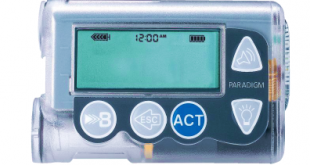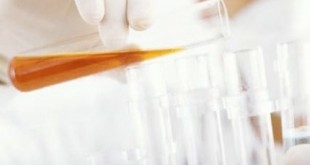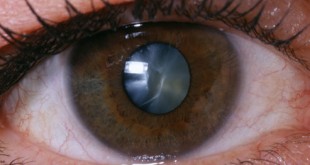Maggot Debridement Therapy (MDT) is one of the treatments used for treating non-healing wounds in diabetic patients. It uses live maggots (fly larvae) which have been disinfected (germ free) to treat the wound. Debridement is the removal of dead, damaged or infected tissue to improve the healing potential of the remaining healthy tissue.
In maggot debridement therapy (also known as maggot therapy, larva therapy, larval therapy, bio-debridement or bio-surgery), disinfected fly larvae are applied to the wound for 2 or 3 days within special dressings to keep them from migrating. Previous research have shown that it is a safe and effective treatment tool for some types of wounds especially chronic, non-healing wounds.
What type of maggots are used In Maggot Therapy ?
 |
 |
| Green Bottle Fly | Maggots |
Maggots, are fly larvae, just as caterpillars are butterfly or moth larvae. Phaenicia (Lucillia) sericata (green blow/bottle fly) larvae are used in medicine, since this species has been used successfully in maggot therapy for many decades.
This species are facultative parasites (able to live either with or without free oxygen) and they are unable to ingest or significantly damage healthy human tissue. Only certified medical maggots can be used for this treatment and it is prudent to use medical grade maggots that have been demonstrated to be disinfected (germ-free), safe and effective.
Maggot Therapy : How does it act?
There are 3 primary actions of medical grade maggots on wounds :
- They debride (clean) the wound by dissolving dead and infected tissue with their, digestive enzymes;
- They disinfect the wound (kill bacteria) by secreting antimicrobial molecules, by ingesting and killing microbes within their gut, and by dissolving biofilm (thin layer of microorganisms eg. bacteria growing on a surface);
- They stimulate the growth of healthy tissue.
Which type of wounds are suitable for Maggot Therapy ?
It is indicated for non-healing necrotic skin and soft tissue wounds, for example :
- pressure ulcers
- venous stasis ulcers,
- Neuropathic foot ulcers (due to nerve damage) and
- non-healing traumatic or post-surgical wounds.
Advantages of Maggot Therapy :
- Some studies have shown that MDT debrided wound decreases in size and prepare them for closure more rapidly than the conventional therapy. However, there are studies which showed that the rate of wound closure was not significantly higher than the other. Thus more evidence is required to demonstrate its effectiveness.
- Excellent safety record.
- Simple enough that non-surgeons can use it to provide thorough debridement when surgery is not available or is not the optimal choice. This means that it is also possible to provide surgical quality debridement as an outpatient or in the home.
- Low cost of treatment.
How is Maggot Therapy done ?
Only specially selected, tested, disinfected larvae are applied to the wound surface and covered with a dressing that prevents the larvae from escaping.
- They will be completely removed 2 or 3 days later.
- Sometimes the wound is completely cleaned by then; sometimes additional treatments may be necessary.
- After maggot therapy, the wound may be clean enough to close, cover, graft, or flap. Your doctor will be able to suggest the best treatment to follow.
Is MDT Safe ?
Common adverse event associated with MDT is pain at the wound site which can be adequately controlled by analgesics and ceased immediately after MDT is removed.?Others include fever and minimal bleeding but they are not serious.
In term of safety issues, MDT is safe if the right species is used and sterility is maintained.
Where Can I Get Maggot Therapy ?
Few hospitals in Malaysia are providing this service for their patients. You should discuss with your doctor who is treating your wound.
Conclusion
MDT is a good alternative therapy for wound care and few studies had shown excellent patient’s acceptance and satisfaction. However, treatment should be individualized according to each patient’s need.
References
- Ministry of Health Malaysia. Maggot Debridement Therapy.Health Technology Assessment Section, Medical development division, Ministry of Health Malaysia,Sept. 2008.
- Wound Care Information Network; http://www. Wounds@MedicalEdu.com (accesed date?)
- BTER Foundation . MDT workshops, . ?(what year?)
Quiz
- Since there are so many flies and maggots in our environment, can we use those maggots?
A : Only certified medical maggots can be used for this treatment. Wild maggots may carry pathogens even more harmful than the ones already on the wound. Therefore, it is prudent to use only medical grade maggots that have been demonstrated to be disinfected (germ-free), safe, and effective.
- What are the common problems encountered in MDT ?
A : Common adverse event associated with MDT is pain at the wound site which can be adequately controlled by analgesics (pain-killers) and ceased immediately after MDT is removed. Some mentioned fever and minimal bleeding but they are not serious.
- Medicinal maggots might reproduce in the wound, producing more maggots. True or not ?
Not true. Larvae of all species are immature, and cannot reproduce.
- What will happen if some of the maggots used are left behind in the healing wound ?
A : If any maggot is overlooked (for example, it was slow growing, and hid in the recesses of the wound when the dressing was opened), it will continue to feed on the dead tissue of the wound only as long as dead tissue is present, and probably only for a maximum of 12-24 hours. Medical grade maggots do not bury in or feed on healthy tissue. Furthermore,, they are obligate air-breathers. Therefore, they must remain where there is air, and they will leave the body as soon as they are finished feeding or as soon as there is no more dead, infected tissue left.
 PENDIDIKAN PESAKIT Kementerian Kesihatan Malaysia
PENDIDIKAN PESAKIT Kementerian Kesihatan Malaysia




